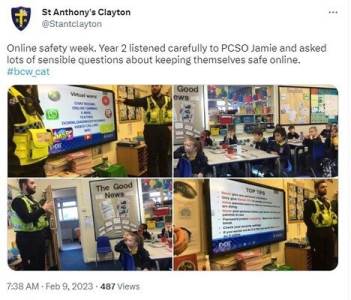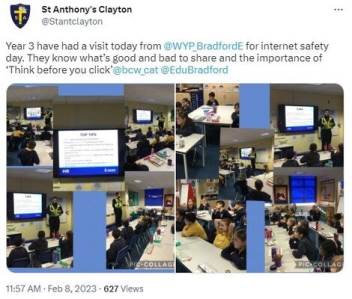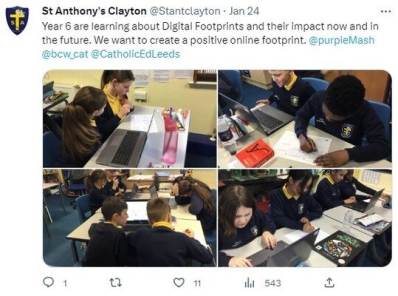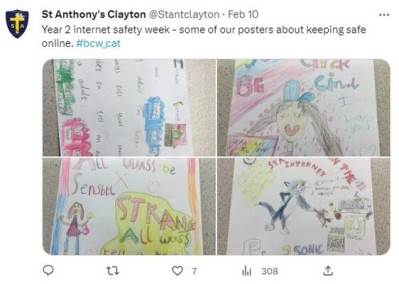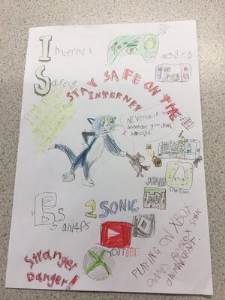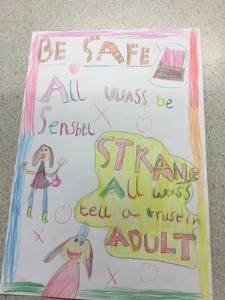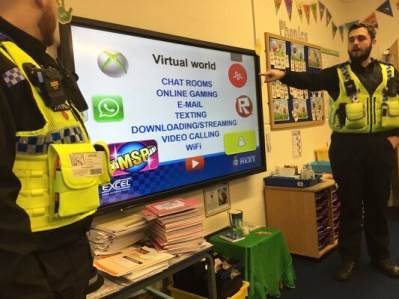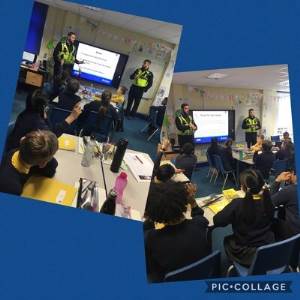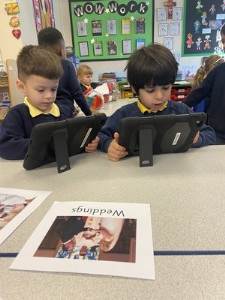Computing
Here at St Anthony's, for teaching Computing we use the Purple Mash Computing Scheme of Work. Purple Mash exposes the children to a wide variety of digital tools, technological skills, and innovations. It is aligned with the National Curricula for Computing, Technology and Digital Competence and we believe it help achieve the very best outcomes for our children.
Computing at St Anthony's
Intent
A high quality computing education is fundamental in preparing our children for the rapidly changing technological world in which we live. Our computing curriculum has been designed to meet the unique setting of our school. Our curriculum is tailored to provide all pupils with the opportunity to immerse in and master their learning. It encourages children to develop a greater understanding of technology, gives them purpose as to why we learn about computing and provides them with the skills they need to become autonomous, independent users of computing technologies.
Computing has deep links with mathematics, science, and design and technology, and provides insights into both natural and artificial systems.
The core of computing is computer science, in which pupils are taught the principles of information and computation, how digital systems work, and how to put this knowledge to use through programming.
Building on this knowledge and understanding, pupils are equipped to use information technology to create programs, systems and a range of content.
Computing also ensures that pupils become digitally literate – able to use, and express themselves and develop their ideas through, information and communication technology – at a level suitable for the future workplace and as active participants in a digital world.
All SEN groups are catered for within our curriculum due to the accessibility of the activities which enables us to personalise a child's learning by setting them suitable tasks. We aim to provide a high quality, relevant, challenging and enjoyable curriculum for ICT and computing for all pupils. As a school where we all strive to be our best, we believe that all learning should be adapted to the needs of all children (SEN, EAL, more able, disadvantaged) and that the curriculum should be carefully planned to take account of everyone in the class so that we can all ‘Do something beautiful for God, each and every day’.
Implementation
Planning for Computing is implemented using two core documents: The National Curriculum Programme of Study for Computing and the Statutory Framework for Early Years Foundation Stage. Long term planning has been developed using the Bradford Scheme of Work that demonstrates coverage and progression of the attainment expectations at the end of Key Stage 1 and Key Stage as identified in the Computing POS.
KS1
By the end of key stage 1 pupils should be taught to:
• Understand what algorithms are, how they are implemented as programs on digital devices, and that programs execute by following a sequence of instructions
• Write and test simple programs
• Use logical reasoning to predict and computing the behaviour of simple programs
• Organise, store, manipulate and retrieve data in a range of digital formats
• Communicate safely and respectfully online, keeping personal information private, and recognise common uses of information technology beyond school.
KS2
By the end of key stage 2 pupils should be taught to:
• Design and write programs that accomplish specific goals, including controlling or simulating physical systems ; solve problems by decomposing them into smaller parts
• Use sequence, selection, and repetition in programs; work with variables and various forms of input and output; generate appropriate inputs and predicted outputs to test programs
• Use logical reasoning to explain how a simple algorithm works and to detect and correct errors in algorithms and programs
• Understand computer networks including the internet; how they can provide multiple services, such as the world-wide web; and the opportunities they offer for communication and collaboration
• Describe how internet search engines find and store data; use search engines effectively; be discerning in evaluating digital content; respect individuals and intellectual property; use technology responsibly, securely and safely
• Select, use and combine a variety of software (including internet services) on a range of digital devices to accomplish given goals, including collecting, analysing, evaluating and presenting data and information.
By the end of each key stage, pupils are expected to know, apply and understand the matters, skills and processes specified in the relevant programme of study.
We seek to inspire in children a love of computing and the aims of computing is to equip children with the skills necessary to use technology to become independent learners. The teaching style that we adopt is as active and practical as possible.
The subject leader is responsible for monitoring the standard of the children’s work and the quality of teaching in line with the schools monitoring cycle. This may be through lesson observations, book trawl of looking at other data for the subject. Formative assessment is used by the class teacher and teaching assistant during whole class or group teaching. School is equipped with a number of IPADs, laptops and Chromebooks. Equipment is kept in trolleys and is locked needing a key to access them. The laptops have Scratch installed for programming purposes as well as Microsoft Office. Each teacher has their own personal IPAD to use in class, a user name and password to access the school system and a school e-mail. We have a computing technician to monitor and maintain the database and school network who visits on a weekly basis.
Impact
The impact of the Computing curriculum is monitored regularly by the Computing subject leader through pupil discussion, samples of work and discussion with teachers. Our approach to the curriculum results in a fun, engaging, and high-quality computing education. It aims to develop a range of programming and technological skills that are transferable to other curriculum areas, including Science Mathematics, English and History. Progress is assessed on an on-going basis by using the National Curriculum Programme of Study for Computing (KS1 and KS2) and the Statutory Framework for Early Years Foundation Stage.
Curriculum Long Term Plan 25-26
2BeSafe Long Term Plan 25-26
-
BCWCAT Online Safety Survey Results
download_for_offline
download_for_offlineBCWCAT Online Safety Survey Results
- Computing LTP 25-26 download_for_offline
download_for_offlineComputing LTP 25-26
- computing-knoweldge-progression download_for_offline
↑download_for_offlinecomputing-knoweldge-progression
- computing-vocabulary---all-years-1- download_for_offline
download_for_offlinecomputing-vocabulary---all-years-1-
- computing-whole-school-ltp-new-pm download_for_offline
download_for_offlinecomputing-whole-school-ltp-new-pm
- Online Safety LTP 25-26 download_for_offline
download_for_offlineOnline Safety LTP 25-26
After School Mash Club: Spring 1, 2024
Every Thursday until 4:30pm

Here are our new Digital Leaders for 2023-2024

Mrs Holdsworth had over 30 Digital Leader applications to read through. The children had many inspiring ideas of what they would like to do as a Digital Leader. We can't wait to put our ideas into practice.

- Computing LTP 25-26 download_for_offline







